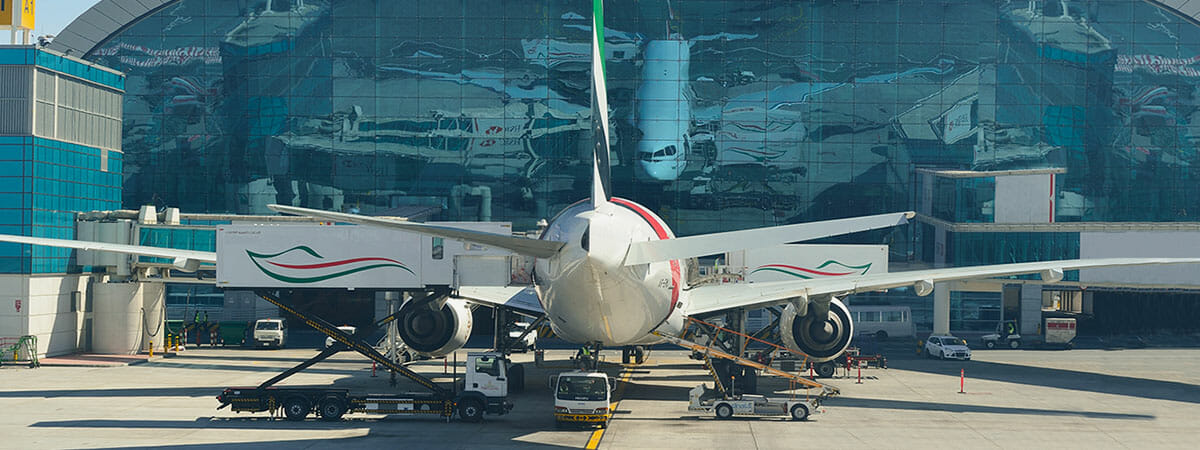What is the Blockchain?
Blockchain is a technology employed to transfer data in a protected and secure way through an encoding system. What is truly groundbreaking in Blockchain technology is that an intermediary is not required to transfer data, as the information is distributed throughout different nodes, all of which are independent of each other and are responsible for validating and recording the information.
How the blockchain disruptive technology works and how it has become part of various applications related to the scope of airports.
The Blockchain was conceived as a system to facilitate the digital distribution of data through a decentralised ledger containing all the transactions that were carried out. This ledger cannot be modified or altered by any participant, which guarantees confidentiality. This means that the Blockchain cannot be counterfeited, making the exchange of assets much securer.
Thus, when data is entered, it can no longer be removed; all we can do is add more data in the form of new records. This data will be legitimised and verified once all nodes are in agreement and have processed it.
An essential step in the Blockchain is the transaction, that is, there must be two parties interested in exchanging a unit of value, whether a cryptocurrency or another asset. This transaction is sent together with other transactions, making up a block, which in turn is sent to the computer network comprising the system. The system computers are responsible for verifying the transactions based on a series of mathematical calculations; when they agree on these transactions’ validity, they are deemed as verified. Each previously verified transaction block is closed with a cryptographic hash, which permits exchanging the unit of value between “recipients“.
Blockchain in airports
The Blockchain has become a benchmark technology for airports and airlines around the world, as established in a SITA report. According to this report, the Blockchain can be used in airports in multiple ways, whether to identify a passenger; issue banknotes; follow assets; manage programmes; or collaborate in improving cooperation between industry members. What is truly beneficial in Blockchain technology is that it allows running multi-business applications where the data is executed jointly by means of blocks, rather than having isolated applications executing the data individually.
Currently, more than half of the airlines have Blockchain programmes and have invested in their implementation throughout 2021. The most recurring use expected from the Blockchain is that of identifying passengers, although they could also benefit from it in other instances. The airline industry has a long history of exchanging information between the involved parties, and Blockchain technology could be a turning point, as thanks to biometric identification systems, passengers will be able to travel without having to show their passport to an official, thus streamlining the process.
This will be made possible via a mobile phone and identity verification systems, by means of fingerprint or facial recognition. This verification will provide access to the application that manages the passenger’s identity and shares the data with the interested parties. This entails disposing of a series of verification processes that have been used up to now and that can be burdensome, inefficient and tortuous: identifying oneself when booking the ticket, at check-in, at the security gates…
When employing biometric systems, passengers must share their personal data with the airline and the destination’s customs service via their mobile phone before they arrive. When arriving at the destination country, passengers will only need to pass through the biometric system that scans their face or their fingerprint and contrasts them with the data via the Blockchain, again by means of their mobile phone.
Another aspect that passengers can benefit from by using Blockchain technology is the possibility of controlling their luggage. Many times, passengers who check their luggage become doubtful on it arriving at the destination country and fear it getting lost along the way. Well, when using Blockchain systems together with a luggage-tracking device, travellers can forget about these concerns. They will just have to attach the emerging company Bagtrax‘s technology device to their suitcase, and they will know its location at all times by simply looking at their mobile phone. If the luggage gets lost, immediate compensation is guaranteed through the Blockchain, which is responsible for connecting all companies with the customer: airlines, airport management, insurance companies, and so on.
Blockchain, COVID-19 and airports
Blockchain technology is not only useful for controlling passengers and their luggage, but also for protecting data, such as public health data at a time in history when the COVID-19 pandemic has affected all countries. In the face of a global situation of uncertainty, which seems to be gradually recovering some of its lost “normality”, the airports and airlines want to guarantee passengers maximum safety. As a result, they have implemented technology that allows sharing the various assets’ health data, always guaranteeing maximum discretion and confidentiality.
Frankfurt Airport was the first to implement this technology in order to control the incidence of Coronavirus in airports and travel by using IATA Blockchain technology to obtain statistics on passenger health. A health passport will be set up to store and update the passenger’s health status via a mobile application that will record their current health status, any COVID-19 tests and the vaccination shots they have received.
Therefore, it will be a digital passport module that updates the information with that received from laboratories, the application itself and vaccination centres and with the health requirements for passengers travelling internationally.
Ubirch is the company entrusted with providing this type of technology. It developed the infrastructure: “Digital Corona Test Certificate”. With this digital certificate, Ubirch’s system assigns an anonymous digital fingerprint in a Blockchain network by means of which the passenger can be verified by the airline at the departure gate and at the destination country’s arrival gate. This is achieved by scanning a QR Code, thus ensuring maximum confidentiality, as the passenger’s specific health data are never made visible on the network at any time.
Another example of using the Blockchain in airports is in the Dubai Airport Free Zone, where regulating cryptocurrencies and bitcoins for this airspace has been supported. This means that cryptocurrencies can be exchanged, thus obtaining a licence in the Dubai Free Zone. This new measure aims to optimise the experience of foreign travellers that are part of the cryptocurrency ecosystem.
Having said all the above, in spite of the expectation of the Blockchain being genuine and more and more airports and airlines implementing these technology systems, the forecast is that Blockchain technology will fully mature within four years’ time, that is, around 2025. According to a report drawn up by Credit Suisse, Blockchain technology is currently in full emergence, with 58% of business owners expecting 10% of global GDP to account for blockchains in 2025.
In short, although the Blockchain stems from the world of cryptocurrency, its use is not limited just to this scope, as we have seen in the examples presented here regarding passenger control and health data.



